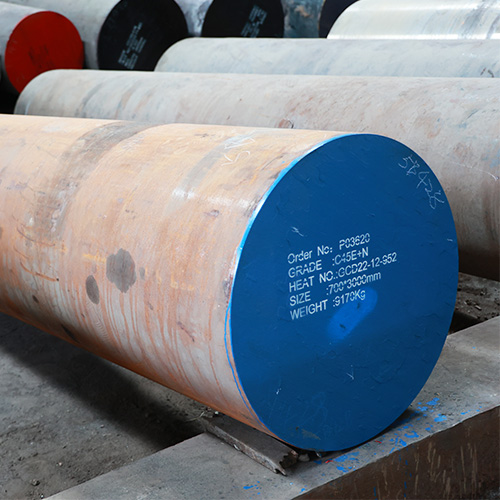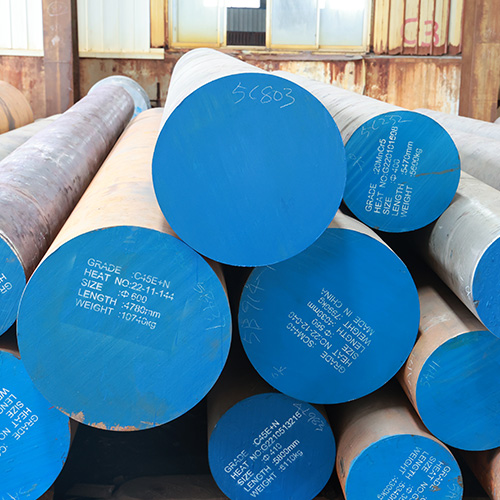Introduction

Steel 1045, a medium-carbon steel, has earned its reputation for its remarkable balance of strength, toughness, and machinability. This versatile alloy finds applications in a myriad of industries, from automotive to construction. In this comprehensive guide, we will delve into the intricacies of steel 1045 hardness, exploring its properties, heat treatment options, and common applications.
Unraveling the Composition of Steel 1045
Steel 1045 is a low-alloy steel that predominantly comprises iron, with approximately 0.45% carbon. This specific carbon content plays a pivotal role in determining the steel 1045 hardness. The higher the carbon content, the harder and stronger the steel becomes, but it also tends to become more brittle.
Factors Influencing Steel 1045 Hardness
Several factors interplay to determine the final steel 1045 hardness:
- Carbon Content: As discussed earlier, the carbon content directly impacts the steel 1045 hardness. A higher carbon content leads to increased hardness, but it can also compromise ductility.
- Heat Treatment: Heat treatment processes, such as quenching and tempering, offer precise control over the steel’s microstructure, significantly influencing its steel 1045 hardness and other mechanical properties.
- Alloying Elements: The addition of alloying elements, such as manganese and chromium, can further enhance the steel 1045 hardness and other desirable properties. These elements can refine the grain structure and improve the steel’s resistance to wear and corrosion.
- Cooling Rate: The rate at which the steel is cooled after heat treatment significantly affects the microstructure and, consequently, the final steel 1045 hardness. Rapid cooling, or quenching, can trap carbon in a hard, brittle form, while slower cooling allows for the formation of softer, more ductile phases.
Harnessing Heat Treatment for Optimal Steel 1045 Hardness
Heat treatment is a critical process for tailoring the properties of steel 1045. The most common heat treatment processes for this steel include:
- Annealing: This process involves heating the steel to a specific temperature and then slowly cooling it in a furnace. Annealing softens the steel, improves its machinability, and relieves internal stresses.
- Quenching: Quenching involves rapidly cooling the steel from a high temperature, often in water or oil. This process traps carbon in a hard, martensitic phase, significantly increasing the steel 1045 hardness and strength.
- Tempering: Tempering is a heat treatment process that follows quenching. It involves reheating the quenched steel to a lower temperature, allowing for the relaxation of internal stresses and the formation of more ductile phases. Tempering reduces brittleness and improves toughness while maintaining a high level of steel 1045 hardness.
Assessing Steel 1045 Hardness: Testing Methods
To accurately determine the steel 1045 hardness, various hardness testing methods are employed:
- Rockwell Hardness Test: This test measures the depth of penetration of a diamond or steel indenter into the material’s surface. The Rockwell hardness scale, typically expressed as HRC, is widely used in the industry.
- Brinell Hardness Test: In this test, a hardened steel ball is pressed into the material’s surface under a specific load. The diameter of the resulting indentation is measured to determine the Brinell hardness number (BHN).
- Vickers Hardness Test: A diamond pyramid indenter is used to create a square indentation on the material’s surface. The diagonal length of the indentation is measured to calculate the Vickers hardness number (HV).
Diverse Applications of Steel 1045
The excellent combination of mechanical properties offered by steel 1045 has made it a popular choice for a wide range of applications:
- Automotive Industry: Steel 1045 is extensively used in the automotive industry for components such as gears, shafts, connecting rods, and suspension components. Its high strength-to-weight ratio and good wear resistance make it ideal for these demanding applications.
- Machine Components: The machinability and good mechanical properties of steel 1045 make it suitable for various machine components, including spindles, bushings, and fasteners.
- Hand Tools: The combination of steel 1045 hardness and toughness makes it an excellent choice for hand tools like wrenches, pliers, and screwdrivers.
Steel 1045 Hardness Table

| Heat Treatment | Typical Hardness (HRC) |
|---|---|
| Annealed | 120-160 |
| Quenched and Tempered | 28-40 |
Conclusion
Steel 1045, a versatile medium-carbon steel, offers a compelling blend of strength, toughness, and machinability. By understanding the factors influencing steel 1045 hardness and the diverse heat treatment options available, engineers and manufacturers can optimize its performance for a wide range of applications. Whether it’s automotive components, machine parts, or hand tools, steel 1045 continues to be a reliable and cost-effective choice.
FAQ
What is the difference between steel 1045 and steel 1050?
Steel 1050 has a higher carbon content (0.50%) compared to steel 1045 (0.45%). This increased carbon content results in higher steel 1045 hardness and strength but can also reduce ductility and toughness.
How can I improve the wear resistance of steel 1045?
To enhance the wear resistance of steel 1045, consider the following strategies:
Heat Treatment: Proper heat treatment, such as quenching and tempering, can significantly improve the wear resistance of the steel.
Surface Hardening: Techniques like case hardening or induction hardening can create a hard, wear-resistant surface layer on the steel.
Lubrication: Adequate lubrication can reduce friction and wear.
What is the best heat treatment process for steel 1045 to achieve maximum hardness?
Quenching and tempering is the most common heat treatment process to achieve maximum steel 1045 hardness. Quenching rapidly cools the steel, forming a hard martensitic structure. Tempering, which follows quenching, reduces brittleness and improves toughness while maintaining a high level of steel 1045 hardness.
